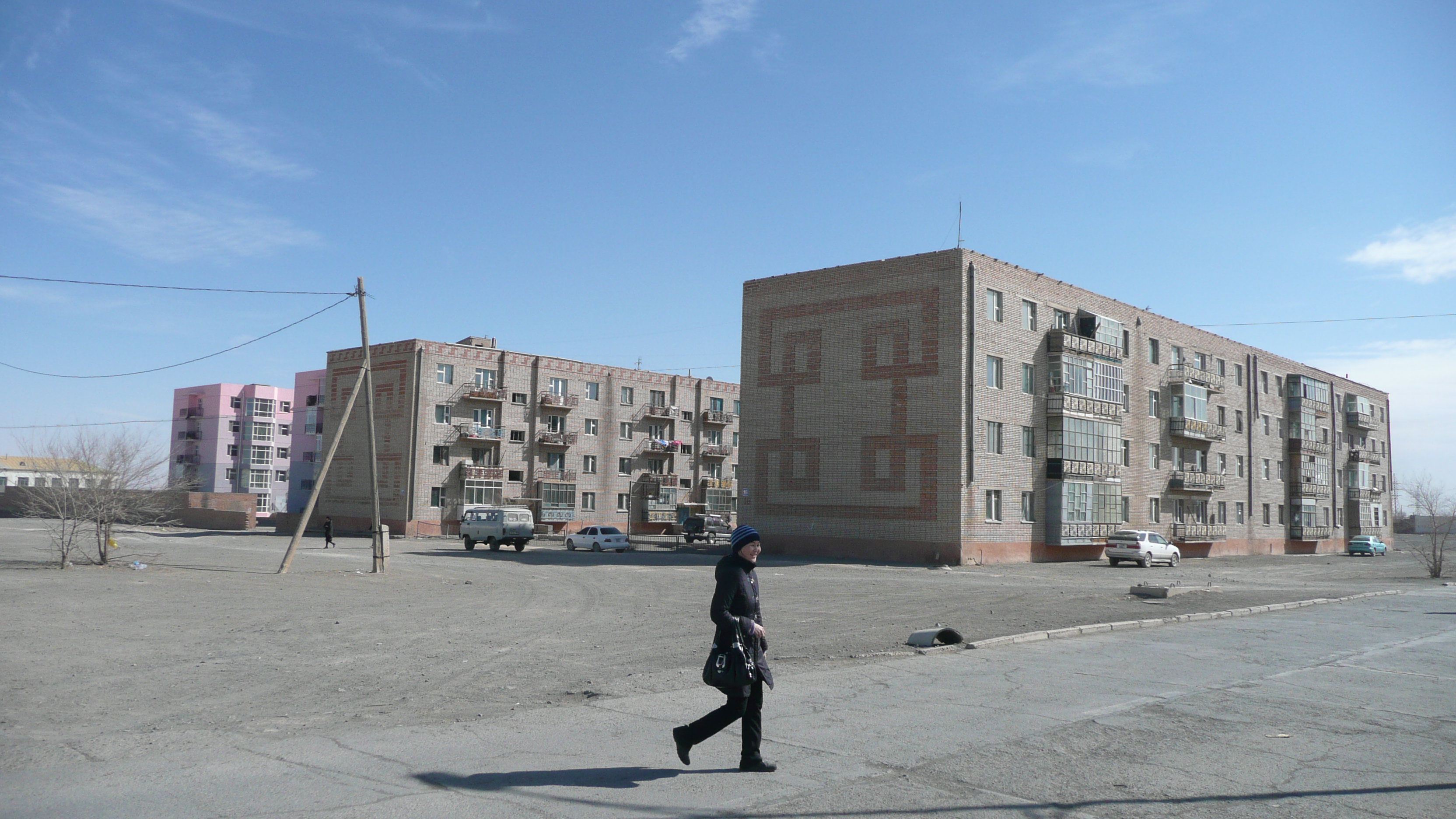TSAGAAN SUVARGA TO BAYAN ZAG
This morning we head deeper into the desert, finally crossing into the South Gobi province after 4 hours of easy driving. We stop for a break at Dalanzadgad or “DZ,” where we can refuel. The provincial capital, DZ has grown rapidly due to an ever increasing influx of business from the nearby Oyu Tolgoi mining operation. It is a somewhat sprawling and non-descript modern town, but with the omnipresent sensation of the desert encroaching from every direction. To the west the Gurvan Saihan mountain range serves as a landmark providing a clear directional guide for our general southward heading.
As we leave the dusty town, resupplied and ready for the adventure to begin in earnest, our little convoy takes off into the vast expanse of the Gobi. The Gobi covers much of the southern part of Mongolia, but unlike the Sahara, with its massive “seas” of sand dunes, the terrain here is made up of large barren stretches of gravel plains and rocky outcrops, with just a small percentage of sandy desert. An hours drive down the dirt track, and we arrive to a strange kind of “oasis,” known as the Three Camel Lodge. We will be staying the night here in a luxurious interpretation of the traditional nomadic experience, built in accordance with environmentally and culturally sustainable development guidelines.

The story of the lodge is an interesting example of a project designed to enable controlled tourism, bolstering the economic position of the local community while preserving and protecting the Gobi desert environment. Conceived by Jalsa Urubshurow, who served as an advisor on tourism development and environmental protection to all seven of Mongolia’s Prime Ministers and two Presidents since the start of the democratic regime in 1990, the Three Camel is a sustainable ecolodge is modeled after traditional Buddhist temple architecture. Local nomads and community associations were consulted to best determine the lodge’s placement and its design within the Mongolian landscape. The design traces the traditional outline of the Buddhist temple-style architecture built without use of nails or ironwork of any kind. The Three Camel Lodge opened its doors in 2002 and became the first ger camp in Mongolia to sign a contract with the National Parks to protect the surrounding area of 160 kilometers from poaching and other non-environmentally sound activities.
From the lodge it is just a short drive to Bayanzag, also known as Bain-Dzak, or the “Flaming Cliffs” in English, one of three main touristic sites in the region. The sandstone cliffs turn a bright orange-red at sunset, but their bigger attraction for many visitors is what has been found hidden within the their rocky folds. In the 1920s the American paleontologist Roy Chapman Andrews discovered the first dinosaur eggs here. Chapman spent two years searching the area for fossils, and carried the results of his work, including a large dinosaur skeleton, back to the Ulaanbaatar Natural History Museum in a caravan of 70 camels. The ancient sea bed remains of interest to palentologists and many more fossils have been uncovered since.
We could walk along the edge, appreciating the desolate beauty of the Flaming Cliffs under the endless sky, as the light transformed the rock into a glowing orange red. It feels like we are in the very heart of the Gobi. The vastness stretches out beyond the cliffs into infinity.

[Photos courtesy Mongolian Bankhar Dog Project/OEX]


You must be logged in to post a comment.